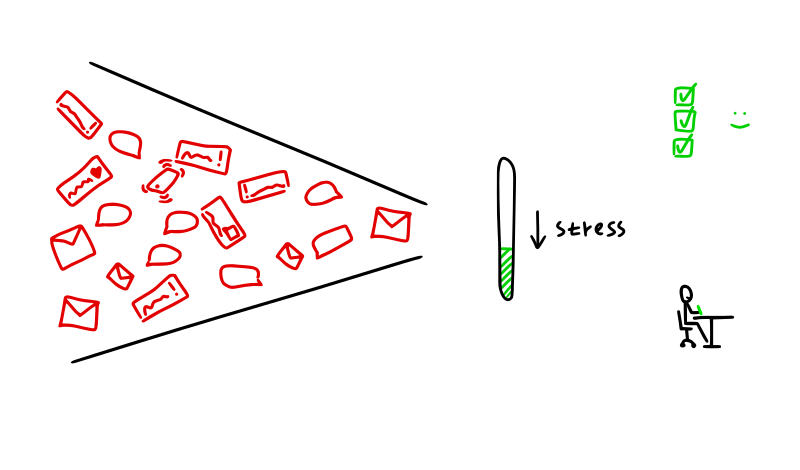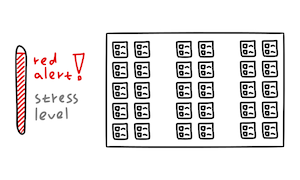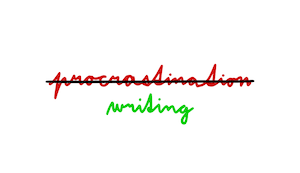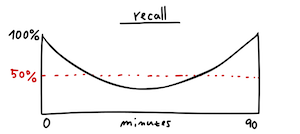Want to stop procrastinating and start working?
You need a prompt
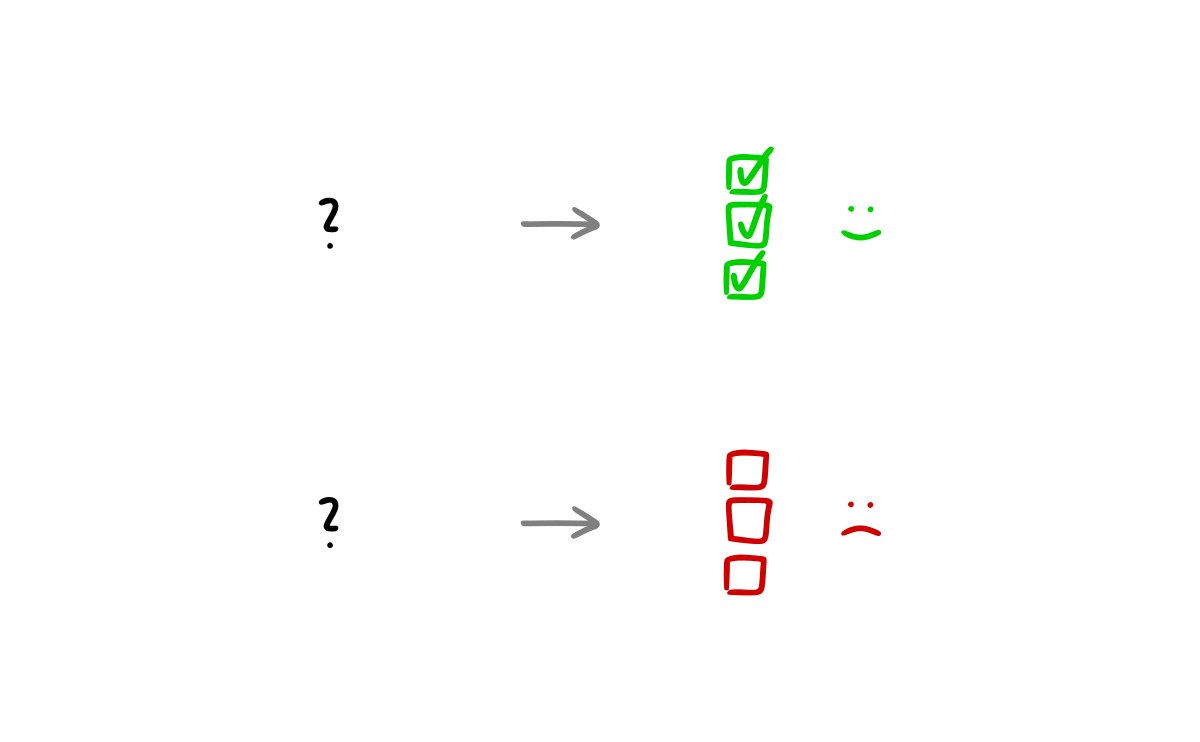
In behavior science, there's a rule:
If there's no prompt (or trigger) for a behavior, it won't happen.
If your partner doesn't remind you to wash the dishes, you forget.
If your phone doesn't light up because of an incoming message, you don't check it. If you don't remember an upcoming meeting, you don't show up.
No prompt, no behavior.
Let’s briefly take a look at what kind of prompts there are.
3 types of prompts
Stanford professor B J Fogg distinguishes 3 types of prompts:
- Person prompt
You remember to do something. - Context prompt
You have a reminder in the surroundings that tells you to do something. - Action prompt
You decide to do a certain behavior after another behavior that you do daily.
Person prompts work once you have habits in place. You don’t need a prompt to brush your teeth because you’ve been doing it for so long. Otherwise, we wouldn’t bet on personal prompts.
The last 2 types of prompts are more reliable. A combination of them can work wonderfully.
Now, how does this relate to productivity and procrastination?
There are 2 main ways:
- You can remove prompts for unproductive behaviors you want to curb.
- You can add prompts for productive behaviors you want to do more of.
Let's get into it.
1. Remove prompts for unproductive behaviors
No prompt, no behavior. This can be used to stop doing what you know doesn't help you.
As an example, take getting distracted. You don't get side-tracked out of the blue, there's something that leads you down an unproductive rabbit hole.
Let's look at the prompts. What prompts you to get distracted?
Here's a short list:
- Hearing the PING!!! of a notification
- Seeing a notification
- Looking at your phone
- Getting bored with your work
- Feeling stressed after thinking about your work
- Remembering that you wanted to buy something
- ...
Any of these events can act as procrastination prompts that derail your day. And they will derail your day, if you don't have a plan for dealing with these luring distractions.
Take a moment, right now, to think about your top 5 procrastination prompts.
What are they for you?
Make a list on a post-it note, in a new doc, or in your favorite notes app. You can also use this 1 page worksheet we prepared for you.
Got the list now?
Now ask yourself this:
How can I remove (or manage) this unhelpful prompt when I want to be productive?
Examples:
- Hearing the PING!!! of a notification
- Put your phone in Do Not Disturb mode.
- Turn off notification sounds.
- Seeing a notification
- Disable useless notifications.
- Remove your phone from your field of vision.
- Looking at your phone
- Put your phone in a drawer.
- Getting bored with your work
- Take a good break to refocus.
- Push through using self-discipline.
- Work on your mindfulness to have a higher chance of realizing this
- Get bored more often to enjoy your work more
- Feeling stressed after thinking about your work
- Make a short list of 1-4 priorities for the day.
- Remind yourself to focus on where you can start, no matter how small.
- Remembering that you wanted to buy something
- Write it down on a piece of paper to look up later.
These strategies are very simple. All you need to find them is often a minute or two of thinking.
If you figure out your own ways of removing unhelpful prompts or managing the immediate urge to get distracted, you will massively improve your chances of making progress.
Here's the short worksheet for you again to try this exercise right now.
2. Add prompts for productive behaviors
The second way of taking advantage of prompts is to use them to be more productive.
When you remove prompts for unwanted behaviors like getting distracted by a loud notification, you can find yourself with nothing to do. You have an open window in your routine. Now is the time to add prompts for things you want to do.
For example, say you have a task “Work on a presentation about X.” That’s great, but how do you know when it’s time to do that? Are you expecting yourself to do it at 9AM or at 6PM? Do you have a reminder somewhere where you’ll notice it at the right time?
Without a clear reminder, it’s easy to waste time. You sit down in front of your computer and wonder: what do I do now? And if you don’t have an answer for that (a prompt), then you can simply default to the easiest options available: checking email or social media, reading the news,...
If you want to work on a task, create a prompt for it.
How?
All you need to do is ask yourself these 2 questions and think for a moment:
- What do you want to do today?
If you don't already have a to-do list of some sort, write down 1-4 things you want to get done today. - What's your behavioral prompt for each task?
How do you know when to start working on something?
If you write a to-do, but aren't sure about when you'll do it, chances are you won't do it at all.
We need prompts. Something to tell us: now do this.
There are many types of prompts that can work. It's up to you to find what's best given your daily routine. A good prompt is hard to ignore, specific, well-timed, and most importantly, leads to taking action.
Here's a short list of prompts:
- A notification from your calendar because you scheduled a work session there
- Sitting down at your desk with a cup of coffee and opening your planner
- Seeing a short to-do list taped to your door
- Seeing your running shoes in the hallway
- Opening the browser with the default tab set to your favorite to-do list app
- Seeing a reminder on your phone that you created a week ago
You can get creative if you want, just make sure the prompt is reliable.
To recap, there are 3 types of prompts: action prompts, person prompts, and context prompts.
Each of the examples above except one are context prompts. Context prompts are rooted in your environment. As such, they don’t rely on your memory (which can be unreliable).
Sitting down at your desk with a cup of coffee is an action prompt. An action prompt is a rule you set for yourself that can be encapsulated by:
After I _________, then I will _________.
The more times you use the action prompt to do the targeted behavior (open text editor and start writing, get textbook and start studying,...), the more reliable the action prompt.
One more thing: create reminders for realistic behaviors.
Unrealistic prompts will be ignored.
If your calendar sends you a notification like “Work for 4 hours,” you will probably ignore it, unless you have a solid work habit.
On the other hand, if the notification says “Read chapter X” or “Work for 30 minutes on Y,” then there’s a good chance that you will actually do just that.
Don’t set yourself up to fail. Set yourself up to win by using realistic prompts.
Summary
To get less distracted and become more productive:
- Reduce unwanted prompts
What makes you go into downward spirals? How can you prevent that from happening? - Add productive prompts
What helps you get into a productive state of mind?
How can you create a useful reminder to do it more often?
This simple reflection exercise (worksheet for it here) will help you make quick changes with immediate payoff.
Try it!
